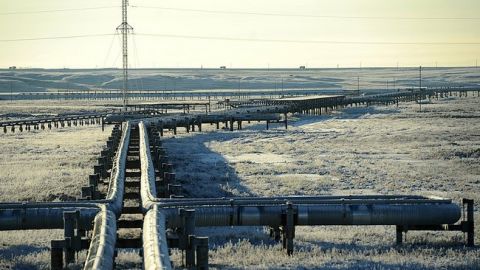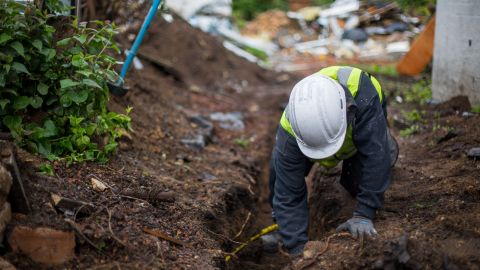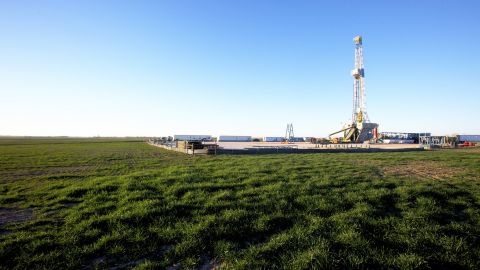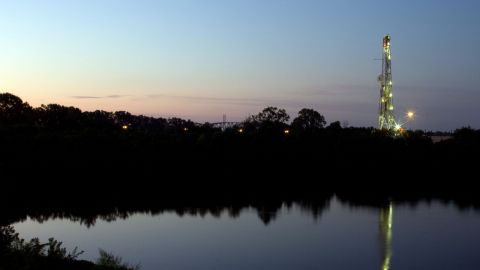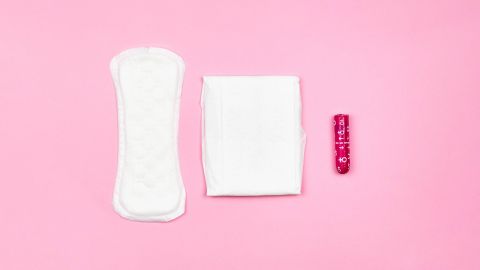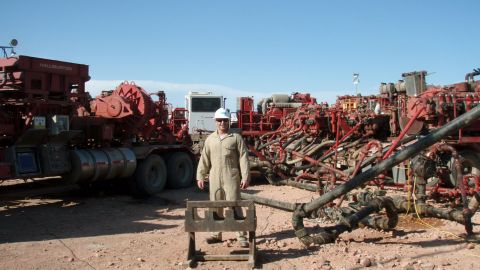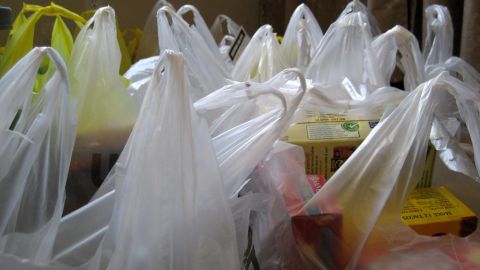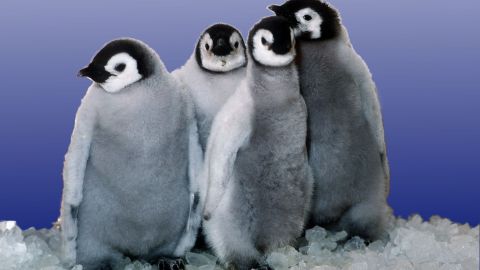AD READER: This episode of The Sweaty Penguin is brought to you by struggle meals. Didn’t have time to make it to the grocery store this week? Try ketchup and rice today.
ETHAN: Welcome to episode 103 of The Sweaty Penguin: Antarctica’s Hottest Podcast. I’m your host, Ethan Brown. Today we are talking about phytoplankton, which is more than just what you call Plankton from Spongebob doing martial arts. [“hi-yah!”]
ETHAN: Now, there will obviously be a lot of Spongebob jokes in this episode, but I want to clarify that Plankton from Spongebob is a zooplankton, a microscopic animal. Phytoplankton are different. These are actually microscopic algae floating around in the ocean. The word phytoplankton is derived from the Greek words “phyto” which means plant and “plankton” which means drifter or wanderer. Which makes me wonder, why are we saying this in Greek? Plant Wanderer is not only a way cooler name, it’s exactly what I’m gonna call my mobile dispensary when I inevitably move to Joshua Tree. Phytoplankton may be tiny but they are mighty. Even though they only account for about 1% of the world’s biomass (organic material weight), they produce anywhere between 50 to 80 percent of the world’s oxygen. So the next time you root against the Chum Bucket, think about the fact that Plankton is the reason you can breathe. Again, want to clarify that is not factually accurate, but my team is obsessed with Spongebob, so this is just how today’s episode is going to be.
ETHAN: But back in July, an alarming headline about these powerful wandering sea drifters went viral.
REPORTER: An Edinburgh-based research team fears plankton, the tiny organisms that sustain life in our seas, have all but been wiped out after spending two years collecting water samples from the Atlantic. […] Previously, it was thought the amount of plankton had halved since the 1940s, but the evidence gathered by the Scots suggest 90% has now vanished.
ETHAN: Now, losing 90% of plankton would mean severe consequences to marine life all over the ocean, and to the very air we breathe. We, humans, may not be able to survive that. And that’s in part how we know that this news story was totally false! The study was self-described as an “observation think piece” and independent marine scientists have reported that there has not been enough evidence to support such a drastic change in plankton populations. Several scientists have also pointed out that the study lacked transparency in its data collecting and analyzing methods and failed to cite the baseline for the “90% gone” claim. And I have to say, come on, Scotland. You gave us Shrek and plaid, we were all rooting for you. So the claim that 90% of Atlantic plankton is lost has thankfully been debunked, but not before climate influencers picked up the story and spread it like wildfire, including on the Netflix documentary “Seaspiracy”, the charity project Save the Reef and many popular social media accounts. It really begs the question: should we be allowing Scots to conduct marine research? I guess it’s called ScotLAND for a reason… [ba dum tss, “oh brother this guy STINKS”]
ETHAN: So phytoplankton have NOT all but disappeared, but there are still issues to discuss. In fact, when some species over-flourish, they can wreak havoc on local economies and become a major health threat to marine creatures and humans. Today, we discuss why phytoplankton can be both important and harmful, what issues surround them, and where we go from here.
ETHAN: The Sweaty Penguin is presented by Peril and Promise: a public media initiative from The WNET Group in New York, reporting on the issues and solutions around climate change. You can learn more at pbs.org/perilandpromise. If you want to take two minutes to help out The Sweaty Penguin, you can either leave us a five star rating and review or join our Patreon at patreon.com/thesweatypenguin. Doing that either earns you a special shoutout at the end of the show; joining the Patreon gets you merch, bonus content, and a whole lot more.
ETHAN: But first, it’s time for Phytoplankton 101. [bell ring] Like I mentioned earlier, phytoplankton are microscopic plants found in marine and aquatic ecosystems. Just like plants found on land, phytoplankton contain green pigments called chlorophyll, which absorb light to provide energy for photosynthesis. Because phytoplankton need light to live and grow, most are found floating at the top layers of the ocean where sunlight penetrates the water. These plants are also the foundation of the aquatic food web. They are on the menu for everyone from microscopic zooplankton like copepods to multi-ton whales. Even Plankton from Spongebob presumably eats it! That said, given how often he tries to steal the Krabby Patty secret formula, I’m willing to bet he’s gotten kind of sick of it.
PLANKTON: I’m gonna… wah??? The secret formula? Must be one of Krabs’ tricks. [pulls bottle out, starts walking] He’ll pop out any second now. [bird tweeting, heavy breathing] WELL??? Nothing? Alright. [keeps walking, kicks door open] Alright, let’s check this out. [bottle crash sound, paper crinkle sound] WHAT!!! FOUR CUPS PHYTOPLANKTON! [dramatic horn sound] NOOOOOOOO!
ETHAN: Sorry Plankton. We all gotta eat our vegetables. [munch sound] Phytoplankton are also super productive! They lift weights, eat goji berries, take daily walks, read a book every night, meditate for four hours a day, and work 19 hour shifts seven days a week because, as they posted on their LinkedIns, “the grind never stops.” Actually, in this case, productivity refers to their very high rate of photosynthesis, or converting carbon dioxide into oxygen. According to some estimates, phytoplankton provide 50 to 80 percent of the world’s oxygen and absorb between 30 to 50 percent of the world’s carbon. When these little guys die, they sink to the bottom of the ocean as “marine snow,” locking away carbon for millions of years. Fossilized remains of microalgae are compressed by geologic forces, which over time turn into… wait for it… oil. Yeah! Even when they’re dead, they’re still building their resumes, getting jobs inside car and truck engines. It’s really a testament to their go-getter attitude. Keep up the hustle, phytoplankton!
ETHAN: Now I know what you’re thinking. If they’re so good at storing carbon, could they be used to combat climate change? Some scientists and engineers say yes, and are exploring how phytoplankton could be a climate solution. A marine scientist named John Martin coined the famous line, “Give me half a tanker of iron, and I’ll give you an ice age.” Well, it’s famous in biogeochemist circles at least. But what does this line mean? Industrial revolution leads to hail in Los Angeles 150 years later? A little bit of metal is all it takes to create one of the greatest animated franchises of all time starring Ray Romano as a Wooly Mammoth?
ETHAN: Actually, it refers to Dr. Martin’s conclusion that if we added enough iron into the ocean, it would drastically change the climate. Why? He discovered that sprinkling a little iron dust into the ocean triggered massive blooms of phytoplankton, which in turn, could possibly absorb enough carbon dioxide to cool Earth’s atmosphere. And I just have one question. Why was Dr. Martin going around sprinkling iron dust into the ocean? Is being a scientist literally just going around doing weird mundane tasks until you make a fascinating discovery? If so, sign me up!! And how does one even acquire iron dust? Did he just have iron dust on his person? Is there an Etsy shop? Seriously, if you can get famous off iron dust, I’ll rock up to an iron mine with a Solo cup and just start scooping!
ETHAN: Why iron? Well, researchers have found that iron is one nutrient that is unusually depleted in water compared to macronutrients like nitrogen and phosphorus. Marine species have to be really resourceful with the iron they use in their cooking, which is why any chef that’s good at that earns the title of… Iron Chef. [ba dum tss] While iron isn’t too important for most plants, it actually turns out to be a huge factor in promoting phytoplankton growth. Meaning phytoplankton aren’t just LinkedIn bros, they’re also Tumblr girls: they love to travel, and they’re anemic. That’s a fun combo. In phytoplankton, iron helps a specific enzyme pick up nitrogen, which stimulates growth. More iron means more macro nutrients get picked up which means more algae grows.
ETHAN: Because of this principle, a lot of people have romanticized the idea that phytoplankton could be the solution to climate change, putting out videos like this one:
REPORTER: Australian innovation company Ocean Nourishment Corporation have pioneered a patented carbon removal technique that enhances this biological pump with low opportunity cost and global scale potential. The process works by boosting nutrient deficient areas, also called ocean deserts, enhancing phytoplankton’s ability to absorb and export carbon to the deep ocean.
ETHAN: With inspirational piano music and a soothing British voiceover, it has to be a flawless solution? I mean, if David Attenborough has taught us anything, it’s that, right? In this case, not exactly. The idea is that if we dumped iron and a nitrogen-rich compound called urea in unproductive areas in the middle of the ocean, phytoplankton could bloom, absorb excess carbon in the atmosphere, and carry it down to the depths below. You can see from the way this clip was edited that many people are excited about that. But Ocean Nourishment — the company in the video — has some serious questions to answer. Back in 2008, a study in Marine Pollution Bulletin found, first off, producing that compound urea as Ocean Nourishment suggested requires fossil fuels, and also, adding nitrogen could ultimately release more carbon than it stored. And whether it be nitrogen, iron, or other nutrients, adding them in excessive quantities can lead to something called harmful algal blooms. For these reasons, as uplifting a video as that was, many experts suggest there needs to be a lot more research into this nutrient dumping before doing it, and that it certainly is unlikely to be a silver bullet solution to climate change.
ETHAN: So even though phytoplankton are really important for carbon storage, the marine food chain, and the very oxygen we breathe, too much of a good thing clearly causes a problem, like sugar or Community. Seriously, the first three seasons were awesome and then it just fell off a cliff. My gut tells me to be excited about the new movie, but if it’s anything like season four, I might end up punching a hole in the TV. So what are these harmful algal blooms I mentioned? Well, phytoplankton hang around the ocean’s surface to soak up the rays. But the nutrients that are necessary for their growth come from the deep ocean. When this nutrient-rich deep ocean water rises to the surface, it facilitates the growth of algae, whose masses can be seen all the way from space! This whole time you thought they were continents but they’re actually just algal blooms! In addition to nutrients, factors such as water temperature, light availability, salinity, acidity, and carbon dioxide can play a role in an algal bloom.
ETHAN: But now, enter humans. We talked about the Clean Water Act two days ago, whose 50th anniversary is coming up on Tuesday. Before the Clean Water Act, untreated sewage was being dumped into waterways, which added nutrients to the water and prompted harmful algal blooms. To its credit, the Clean Water Act put a stop to that. However, the big issue today, which is not regulated, is agricultural runoff containing fertilizer and animal waste. This runoff contains very concentrated levels of nitrogen and other nutrients, and during high rainfall events, they can run off from agricultural land into nearby water bodies. When phytoplankton encounter them, their populations explode. Who knew agricultural runoff was such an aphrodisiac? I think I know what my 2023 Valentine’s Day plans are now! That nutrient explosion can lead them to suck up other nutrients that other aquatic species need to survive, block sunlight from reaching deeper into the ocean causing harm to important ecosystems such as seagrass meadows, and if the phytoplankton species is toxic, the problems only get worse. For example, in 2017-2018, a harmful algal bloom event in Florida lasted about 14 months, producing more than 2,000 tons of dead marine life, creating awful smells, and costing businesses more than $8 million. The culprit of the devastating damage was a species of phytoplankton called Karenia brevis, which produces a dangerous neurotoxin that affects the central nervous systems of many marine organisms. And like, of course it’s an algae named Karenia. Apparently even the oceans have Karens! [“boooooo” sound]
ETHAN: People can be exposed to these marine algae toxins by eating contaminated shellfish or fish, swimming in contaminated water, or even breathing in microscopic droplets in the air. Coming into contact with these toxins can cause respiratory issues, shortness of breath, eye irritation, skin irritation, and asthma attacks. Paralytic Shellfish poisoning is one illness from harmful algal blooms that can cause life-threatening neurological effects.
ETHAN: On an economic level, all this damage to marine and human life comes with a price tag. The Woods Hole Oceanographic Institution estimates that the national annual average cost of HAB’s is about $50 million. That’s right, phytoplankton cost America the same amount as Aaron Rodgers costs the Green Bay Packers! And honestly, I don’t know which investment is worse. I mean, you lost to the Giants, Aaron! What are you doing? Toxic floating plants create public health costs, commercial fishery closures, insurance costs, declines in coastal tourism, and costs in management. And since harmful algal blooms happen locally, these costs tend to be concentrated in specific regions. In Toledo, Ohio, for example, a harmful algal bloom in 2014 led to a water crisis where nearly half a million people lost access to drinking water and 110 got sick. Obviously that led to horrific impacts and costs at the time, and on that top of that, we’re now eight years removed from that event, and according to a report released in May by the Alliance for the Great Lakes, the city of Toledo still spends, on average, $18.76 per person per year on HAB-related monitoring and treatment. That’s like a whole Chipotle burrito lost for every person in Toledo. If we’re going to be contaminating our water, shouldn’t it with Chipotle poops, not phytoplankton? [fart sound] I’m just saying. [fart sound]
ETHAN: But this bad news for phytoplankton, or as I like to call it, bloom and gloom, doesn’t mean all species are bad. Dr. Lisa Krimsky, Water Resources Regional Specialized Agent in Florida, says this nuance is really important to understand.
- LISA KRIMSKY: So not all algae blooms are considered harmful and it’s important to note that not all blooms are the same, nor are they all toxic. Of the 30,000 to 1 million different species of algae that we have, only an estimated one percent of those are actually toxin producing. So this is really important for us, again from recognizing management and control strategies and also understanding that not all of these organisms that create algae blooms are created equal.
ETHAN: Dr. Krimsky says the majority of the global phytoplankton species aren’t dangerous, and in order to manage and control algal blooms, it’s really important that we understand that. While harmful algal blooms cause problems, non-toxic phytoplankton species can provide a feast to marine organisms, feeding more zooplankton, which feed more fish, which feed even bigger fish and so on. Dead phytoplankton can feed the bottom feeders of the ocean too! Does that mean farmers should start dumping poop in the ocean? No. But when a bloom does happen, it’s important to be able to assess how it might help and how it might hurt. Sometimes it’s not as clear cut as “algal bloom bad,” as Dr. Krimsky emphasized.
ETHAN: How does climate change play into all this? According to a 2021 study in Nature Communications, phytoplankton numbers are projected to decline in the northern hemisphere’s subtropical and temperate regions while increasing in the polar regions by the end of the 21st century. It’s the opposite of grandparents, apparently. This changing phytoplankton distribution will result in an increasingly unstable marine food web and make it more difficult for marine ecosystems to bounce back following natural disasters. Not only does this affect marine life, but it also affects our fisheries, meaning even more challenges for the economy and the livelihoods of fishermen.
ETHAN: Even with an increasing body of research on climate change impacts on phytoplankton, according to North Carolina State University’s Dr. Astrid Schnetzer, making general predictions about global climate change trends isn’t so easy.
- ASTRID SCHNETZER: What are the triggers and trends? And this is where a little bit of the climate change comes in and let me tell you right away, very little is understood about this at this point. […] Here’s one of the major issues. Most of the general predictions people make are based on one case, meaning one algae and one specific region and you cannot use that to extrapolate generally. You can’t. These critters are as different as you are from your neighbor. They’re not the same thing. They might fall into the same phyla but they’re very different.
ETHAN: Dr. Schnetzer says more work needs to be done to understand phytoplankton’s response to a changing climate. Monitoring climate change impacts on tiny marine organisms is difficult and trends are localized. And that’s an important point. We can say climate change is affecting phytoplankton, but we can’t say precisely what it’s going to mean. It’s like cilantro’s effect on a burrito, or Brad Pitt’s effect on Emily Ratajkowski. So again, talking earlier about the “90 percent of plankton are gone” claim, a lot of climate influencers ran with the idea that climate change was the culprit. For what it’s worth, the bogus report that made this claim was insisting climate change had nothing to do with it, but it’s still important for people to understand that the climate links with phytoplankton are really complicated. We can’t extrapolate much off of single studies conducted in specific regions.
ETHAN: So with phytoplankton feeding ecosystems and storing carbon, too much phytoplankton killing aquatic animals and causing damage to human health and the economy, and climate change having an impact we’re not even sure how to quantify, it’s a little hard to say where to go from here, right? We’d want to encourage the growth of something that sucks carbon out of the air, but not to the point that it’s causing harm. It’s like when I was on a Sour Patch kick and ordered a box of 12. I ate two packs like a year ago, had a stomach ache, and haven’t touched them since. And that’s where this gets tricky. The way I see it, there are a lot of solutions to climate change that have less question marks, chief among them cutting carbon emissions. If you want to listen to our carbon capture episode, we talked a little bit about phytoplankton and other carbon capture technologies. I think some are exciting, but all present challenges that cut and dry climate mitigation does not.
ETHAN: On the flip side, harmful algal blooms are something that can be more easily avoided. In fact, there are many strategies farmers can use to reduce nutrient runoff. They can modify their drainage systems, plant cover crops to prevent erosion, plant trees, shrubs and grasses along the edges of the fields to act as a buffer, reduce the frequency and intensity of their tilling, prevent their livestock from entering nearby waterways so they don’t transport nutrients over, and perhaps the biggest one — actually apply the fertilizer correctly. I say that knowing full well that I personally would have no hope of applying fertilizer correctly. I’d probably trip on a stick and spill the whole bag. But sometimes for convenience reasons, farmers might not fertilize correctly, and applying fertilizer in the right amount at the right time of year with the right method and placement does prevent runoff. And not only that, according to farmer Chris Kurt, it also saves money. In fact, he’s gone so far as to test his surface water to see if he’s losing nutrients.
CHRIS KURT: These are the water testing stations. It tests all the surface water that comes off of our fields for nutrients that might be caught up in the water. The more nutrients that stay in the field, the less I have to apply in the future, hopefully the more money that gets put back in my pocket.
ETHAN: That’s pretty striking, right? As I’m sure is the case for many farmers, Chris wants to save money, and fertilizer isn’t cheap. So he’s found that doing everything he can to make sure his fertilizer is being used at maximum efficiency is in his best interest. To actually test surface water is quite the statement, and really goes to show how preventing nutrient runoff helps farmers, not just the issues around harmful algal blooms.
ETHAN: There’s also ways policymakers can help. Governments can invest in and support these efforts from farmers, since many of them require upfront investment and perhaps some training. Obviously that costs money, but it may be cheaper to prevent harmful algal blooms than try to recover from them, not to mention all the environmental and health harm they can cause. And if you’re a fan of regulations, I mentioned that the Clean Water Act created some regulations in this regard, but some have suggested agricultural runoff could be regulated as well. Obviously we wouldn’t want to put strain on farmers, but I’m sure there are ways to go about it that would make life better for farmers and help them save money rather than just making life difficult. Governments could also support lower income communities who get hit by algal blooms in a number of ways. Making laws to prevent utilities from shutting off water if customers are unwilling to pay, distributing water filters, educating people on harmful algal blooms, and general water affordability are just a few options in that regard.
ETHAN: On the carbon storage side, if I can offer one more thought. As a proud owner of a fish tank, I can tell you it is really easy to grow phytoplankton. It’s the same deal in a fish tank — a little bit of phytoplankton is fine, too much and it can start to cause problems, so I actually take measures to try to prevent phytoplankton growth. At one point, I had little baby snails show up in my fish tank that I didn’t even put there — either the eggs got on one of my plants or my fish are just really bad at pranks — and since there was so much phytoplankton, the snail populations exploded as well. All that leads me to say: could climate geeks such as myself create their own personal phytoplankton tanks or outdoor pools sucking up carbon dioxide from the air? I call it operation “grow a whole lot of algae on land and hope it’s storing all the carbon I emit.” [superhero sound] And then like the dumpster truck guys, there could be phytoplankton guys who come through, collect your phytoplankton with all the carbon stored, and bring it to a holding facility or something. We didn’t find much research on that idea, but I thought it sounded pretty cool. Especially the idea of phytoplankton guys showing up to your house. Like, you just know they’re gonna be hot.
ETHAN: Again, I know this is a really nuanced issue, and it’s hard to get our heads around next steps when there’s still so many questions to answer. But if we can nudge phytoplankton to do more of the good and less of the bad, I think there’s a lot of benefit to be gained. We’d have healthier marine ecosystems, store carbon dioxide, protect our health and economy, and ensure Plankton from Spongebob can never figure out the Krabby Patty secret formula.
AD READER: Has your grocery budget been slashed by the overwhelming state of the global economy? Did you just never learn how to cook for yourself even though you are 45 years old? Then struggle meals are the all-in-one solution for you! Our chefs have worked painstakingly to bring you gut-wrenching dishes that cultures all around the world would detest. Even Britain! From Hot Dog on Toast to Just Romaine Lettuce Out of the Bag. Struggle meals: hey, at least you’re helping solve food waste!
ETHAN: The Sweaty Penguin is presented by Peril and Promise, a public media initiative from the WNET group in New York reporting on the issues and solutions around climate change. You can learn more at pbs.org/perilandpromise.
ETHAN: Welcome back to The Sweaty Penguin. With me today is Dr. Ajit Subramaniam, LaMont research professor of biology and paleo environments at Columbia University. Dr. Subramaniam, welcome to the show.
- SUBRAMANIAM: Thank you, glad to be here.
ETHAN: First, could you tell us a bit about your background and your research interests?
- SUBRAMANIAM: I’m a microbial oceanographer, meaning that I study the oceans but very specifically the microbial organisms in the oceans. Very specifically, I’ve been looking at phytoplankton, these are the single celled plants that live in the ocean and give us every second breath of oxygen we breathe a base of the food chain regulate climate because they take down carbon dioxide from the atmosphere and convert it to organic carbon through photosynthesis. So impact organisms I guess. So I studied them in the world oceans. Very specifically, in Kotzebue, we’ve been looking at the population of microbes we called cyanobacteria, which in the old days used to be called blue green algae, because they do photosynthesis. They’re single celled, but they are bacteria, and therefore the modern name for them is cyanobacteria. Some of the oldest organisms on earth believed to have actually caused oxygenation of the earth. But right now are a problem in Alaska. And like you say, a lot of your work has been with cyanobacteria blooms in the Kotzebue sound of Alaska. So do you want to talk more about that work? So cyanobacteria found almost everywhere on Earth. In fact, they seem to thrive in some of the most extreme environments. They were on Earth, like I said, billions of years ago. So they’ve figured out ways to survive in the harshest of environments. But cyanobacteria have, as far as we know, not been seen in the high latitudes of the Arctic in the past. About 12 years ago, the environmental director of Kotzebue got reports from people living there that does, it seemed like someone had spilled paint in the water does this bright green stuff floating in the water. And it’s something that people had never seen before. And when he tested for them, he found after, you know, very unexpectedly, that there were blooms or cyanobacteria, which had never been seen before. And what I guess, bothered him was the fact that a they’ve never happened to, we don’t know what the consequences are or why they were happening. So when I had to be there in Kotzebue, five years ago, for a different project where we were looking at impact of sea ice on marine mammals. We were talking about various things. And I mentioned to him that I work on cyanobacteria around the world. And I’m interested in phytoplankton, he said, Ah, you’re just a person. So then he described to me the problem they were having. And he said, we really, really want to find out what kind of cyanobacteria these are, if they’re toxic, if they’re harmful, in any way, how this might impact the ecosystem, how it impact fish that is main source of sustenance for the people who live there. And that’s basically how the project started. Our interest was really trying to identify the cyanobacteria, and figured out why these blooms started happening and the consequences. We have a hypothesis of sorts that this might be climate related, both because they have not been seen before. And as the Arctic is warming, we think maybe there’s a consequence, but also because the kinds of nutrients that the cyanobacteria need, are essentially what would be released when the permafrost thaws. At this point, that is pretty much circumstantial evidence as we we need to build up the case for it. But this is a working hypothesis that we have right now.
ETHAN: Yeah, I wanted to ask you about that, because obviously, there’s a lot of drivers of phytoplankton blooms, but one of the most commonly cited ones is water pollution. And I was thinking being as North as Kotzebue is maybe not quite as polluted as other areas. I wasn’t quite sure. But do you get the sense that that’s not quite the same issue there as it would be in other regions of the world?
DR: SUBRAMANIAM: When I started doing this work, we actually had dueling hypotheses, one that it was still related to climate. The other that was anthropogenic. One of the reasons being has to do with how the sewage that is treated and released, it’s basically held in holding ponds and is released. And so we basically included the idea that maybe humans are causing it in a local way. But then, when we did the started doing research, and we were using satellites to map where these blooms were happening, we found that are actually happening quite far away from any human settlement. I mean, overall, you can imagine this is a very sparsely populated region of the world. Popular the country has a population of about 5000 people at the maximum. So it’s not exactly teeming with people. And most of the lands around there are completely unpopulated. Me there is really not very many people living there. So when we start when we started, the blooms are actually happening in what is quite far away from where there was any human settlement. That sort of ruled out the idea that this actually had to do with anything that was sort of pollutants that is put there by human activity. The reason they were seeing it around contributes because the water was sort of getting pulled around there. It was getting infected there, as opposed to actually happening there itself.
ETHAN: I know a lot of your work, including this work has been grounded in partnerships with indigenous communities. How did these partnerships come to be and what have you learned from them?
DR: SUBRAMANIAM: I personally have come to realize and believe that we need to answer questions that are important to people. So Usually when there’s a power differential in terms of resources and things like that, it is extremely important for us to listen to what people want to know about and not merely think of citizen sciences, ability for us to use somebody to go collect data for us. So it is sort of that framework in mind that I was listening to the questions that Alex Whiting, my colleague was putting to me, and that’s basically the origins of this particular project, but to take five steps back. The reason I was in Kotzebue, in the first place was based on a prior project called cargo X Kokoon, which translates to ice bridges. And there, we were funded by the Moore Foundation, the Gordon and Betty Moore Foundation, whose program managers were farsighted enough that they basically told us, we will give you the resources, you go to the community, and ask what they would like to know, and then figure out how you’d go about answering that. This is very unusual for most funders to work. It is extremely unusual for most federal agencies to work, although they have mechanisms. So now you have planning grants and things like that one can write and apply for, but still, it takes a lot of foresight to basically go and sort of gain the trust of a community had the discussions in this particular case with the elders in the community, ask them questions that they’re interested in knowing the answers to, and then figuring out your science program by which you go about answering those questions. If we zoom out a little bit, plankton are really really important species to marine ecosystems, but they also cause problems when there’s too many of them. So why is this balance so important when we’re talking about phytoplankton examples that have harmful algal blooms, toxic blooms, and incidentally, the cyanobacteria blooms we have in the in Kotzebue are toxic as a low level or it’s a toxin of a particular kind, but then you also have phytoplankton that can kill you, if you just ate three cells of them. So we’re in very, very small quantities. This is why we have really extensive, careful monitoring of shut off the shellfish because if you get Paralytic Shellfish Poisoning, you could die. So you do have phytoplankton that can do that. Another example of too much or the wrong kinds of phytoplankton, would be the dead zones. For example, what we have in the northern Gulf of Mexico, when you have too much nutrients coming in, you have too many phytoplankton. The phytoplankton, when they die are eaten by bacteria, which consume oxygen. So phytoplankton produce oxygen as a part of photosynthesis. But the bacteria that eat them consume oxygen, and that basically leads to loss in levels, which then kills other things. So deadzones hypoxia, and harmful algal blooms are two examples of phytoplankton blooms, when you have the wrong kind of too much of something. So in terms of balance, you have good and bad, you would like to figure out ways to mitigate the bad while encouraging the good. Sometimes you can do that and other times you can’t.
Absolutely. And when we hear words like harmful algal bloom, and we’re kind of talking about good and bad, isn’t algal bloom always harmful, or can there be healthy algal blooms, they absolutely healthy algal blooms. In fact, it is the one of the largest blooms, that you know, they call it a single bloom, known to mankind is the spring bloom that happens in the oceans, and they basically feed the fish. So you absolutely have good blooms and bad blooms, you can think of harmful algal blooms, for the most part as being just too much of the good thing. You know, a spoonful of sugar is fine. You’re drowning in a barrel full of sugar kind of stuff, that essentially might be the better way to think about it. But for certain there are good blooms. And we would like to have good blooms. It has been proposed by many people to accumulate good rooms artificially as mitigation for climate change, because these phytoplankton take up oxygen, carbon dioxide from the atmosphere as a part of the photosynthetic process. And then if you can sink them down to the depths of the ocean, you’re removing the carbon dioxide from the atmosphere and thereby reducing greenhouse gas effects. So people are actually working on ways to engineer the good blooms.
ETHAN: Yeah, I was gonna ask you about that because algal blooms do suck carbon out of the atmosphere. I’ve seen these proposals to say, let’s create blooms of our own to do this, as someone who researches some of the bad of algal blooms as well. How do you react to these proposals?
DR: SUBRAMANIAM: Very cautiously. And with great deal of skepticism, naturalism, there’s one of the challenges here is that it does vary depending on where you are and what kind of blooms right so it depends on the process by which you’re engineering some of these blooms. But there is a very high potential for the danger of engineering the wrong kinds of blooms, which is basically that you could end up with a harmful algal bloom instead of a balloon that you’d actually dare to do good.
ETHAN: You talked about your hypothesis and your Kotzebue research has been very climate driven. And obviously there are a lot of ways that climate change affects phytoplankton and phytoplankton blooms. In your research, what maybe have been some of the more glaring impacts of climate change or some of the links or causes that you’ve specifically identified in terms of climate contribute as a sign of bacteria blooms?
DR: SUBRAMANIAM: Kotzebue is one example of us finding an organism that didn’t exist there before, because of what we tried to pick off. It’s another an expansion in the ranges of some of these organisms, Paul would exemption expansion is probably the right word to put it right where to put it because I don’t want to be considered somehow not Paul centric. So polar expansion of some of the organisms, and but the fact is that climate change is moving fishes, the habitats in which organisms thrive. It’s changing that. And this is one of the questions that we’re sort of constantly trying to go after. It is not just changing it physically in terms of the geography, but it’s also changing it in terms of the timing. And so there is a potential that many people are studying, where you have a mismatch between when you have phytoplankton, the plants that grow through photosynthesis, and you have zooplankton, which are the small animals that eat the phytoplankton, that are then eaten by the fish. Now, these are all linked together in time and space, or, or evolution has taken us to where we are today. But if this linkage is broken in some fashion, where, for example, you have earlier blooms of phytoplankton, when you don’t have the zooplankton, and you basically cause a break in that link, then we would have failure of fisheries. So it is not just that you’re going to have new organisms or species growing where it didn’t happen before. But you also have actual breakdowns in the ecosystem because of the mismatches and timing, which then have or downstream consequences, or up to foodweb consequences in a number of rich ways you can go, what are some of the questions that you hope to answer with your future research? What I’d like to figure out is whether the hypothesis about climate change being the cause of the appearance of cyanobacteria in the Arctic waters around Kotzebue is true. And we need to know that both because we would like to figure out how we might be able to mitigate those steps. If it is indeed your climate change, then we might have to think about what we can do about it. But also because these changes impact the food web. In general, phytoplankton known as diatoms make a lot of fatty acids and therefore are considered good food for that can basically be eaten by zooplankton and fish, whereas cyanobacteria in general are not taught to be very good food. If indeed cyanobacteria replacing diatoms in the foodweb, then that could have longer term consequences to the fish that people depend on. And I think we need to understand these processes for no reason, but at least to know how these ecosystems are going to be impacted going forward.
ETHAN: Last question for you, we started to talk about public knowledge and awareness about these issues. If you were to give a message either to the general public or even to politicians to better understand your research and the significance of these issues, what would you say to them?
DR: SUBRAMANIAM: So there are changes to the ecosystem that are not always visible to the eye in this particular case changes because of changes to phytoplankton. These changes could be harmful in many ways. It could change the quality of the food, the amount of food and sometimes could even be directly toxic to the human too bad for human health. So we need to understand how the system is changing. And we need to figure out how we can mitigate against these changes. So without begins with basic research, and then trying to understand how to convert the basic research into policy that makes the life of the people who live there better.
ETHAN: Dr. Subramaniam thank you so much for joining us.
DR: SUBRAMANIAM: Thank you, my pleasure.
ETHAN: This wraps up episode 103 of the sweaty penguin. Take two minutes, help out the show and get a shout out at the end of the show by leaving a five star rating and review on Apple or Podcast Addict or join our patreon at patreon.com/thesweatypenguin you get merch bonus content and more. Clips today came from keep the faith ministry science animated UF Thompson Earth Systems Institute SEC ASC and this American land special thanks to our emperor penguin patrons Lawrence Harrison brownie Central. This sweaty penguin is presented by peril lunch promise a public media initiative from the WNET group in New York reporting on the issues and solutions around climate change. You can learn more at pbs.org/peril and promise. The opinions expressed in this podcast are those of the hosts and guests. They do not necessarily reflect the opinions or views of peril and promise or the WNET group. Thank you all for listening, and I’ll see you next week.

